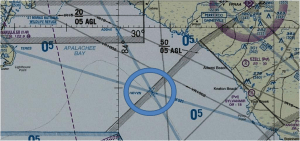The 2022 Russian invasion of Ukraine has brought clarity to many things we have long taken for granted. One of those is the ritual of putting children to bed at night. For most of a century, parents have had the security of knowing their children were likely to survive the night.
Now, as before, that is no longer a sure thing.

World War II
I was born two months after World War II ended. Throughout my early years, echoes of the war still reverberated. Although knowing no violence first hand, I grew up with a book of poetry and prayers for children. One page featured a graphic of orphaned children saying night prayers during the London Blitz of 1940. The photo below is not exactly what was in my book, but it is similar.

On that page of wartime horror were the words I had been taught as a nighttime prayer.
Now I lay me down to sleep,
I pray the Lord my soul to keep.
If I should die before I wake,
I pray the Lord my soul to take.
During my wife’s childhood, she recited that same prayer. Mirroring our own bedtime ritual, we taught our children the same words.
According to this source, this children’s prayer originated in the 1700s, inspired by Psalm 4:8. “I will both lay me down in peace, and sleep: for thou, LORD, only make me dwell in safety.”
1700s to 1900s
When that childhood prayer was still new to the world, high infant mortality was a fact of life. During the first months of the Covid 19 pandemic, I received a stark reminder of that statistic as I walked through the North Cemetery in Portsmouth, New Hampshire.

I came across a tombstone marking the deaths of all three of the children of Seth and Temperance Walker in a matter of four days in 1798.
According to the marker, Nancy, Temperance, and Samuel Walker were “promising children … who were lovely and pleasant in life and in their deaths were not divided.” The children were 12, 6, and 4 years old. Presumably, a contagion of some sort took those young lives in quick succession.
War brings its own contagion of horror and uncertainty to parents and children alike.

A Brighter View
When our youngest was five or six years of age, she was invited to a sleepover with my wife’s aunt. When her aunt heard our daughter’s prayer, she thought the words were anything but comforting for a child. So, she taught her a new version of the nighttime prayer, the same one she had taught her child.
Now I lay me down to sleep,
I pray the Lord my soul to keep.
Guard me Jesus through the night,
And wake me with the morning light.
Our little one taught that version to us parents, and we adopted it henceforth as an improved nighttime prayer for both our children.
A Darker Reality
However, over the past seventy years, humans have not evolved as much as we had thought. We had been deluded by a long period of relative peace into believing that over time, mankind had become more spiritual, more humane.
Clearly, that is not the case. The dark side of humanity, inhumanity, has risen its loathsome head once again.
As always, innocent children are being devastated, either bodily or emotionally. So, I expect that to the childhood victims of war, the blander version of the nighttime prayer that our daughter taught us seems out of touch with reality.
Whereas my family, historical and present, never put much thought into the last two lines of this 300-year-old prayer, Ukrainian children probably do.
Now I lay me down to sleep,
I pray the Lord my soul to keep.
If I should die before I wake,
I pray the Lord my soul to take.
According to Google translate, the prayer I recited as a young child looks like this in Ukrainian.
Тепер я лягаю спати,
Молю Господа, щоб моя душа збереглася.
Якби я померла, не прокинувшись,
Молю Господа душу мою взяти.
Teper ya lyahayu spaty,
Molyu Hospoda, shchob moya dusha zberehlasya.
Yakby ya pomerla, ne prokynuvshysʹ,
Translated back to English, we get the following.
Now I go to bed,
I pray to the Lord that my soul will be preserved.
If I died without waking up,
I ask the Lord to take my soul.
Arguably, prayers can’t stop bombs and missiles from destroying human lives. However, bombs and missiles can’t destroy souls, especially those of the most precious human beings, children.






